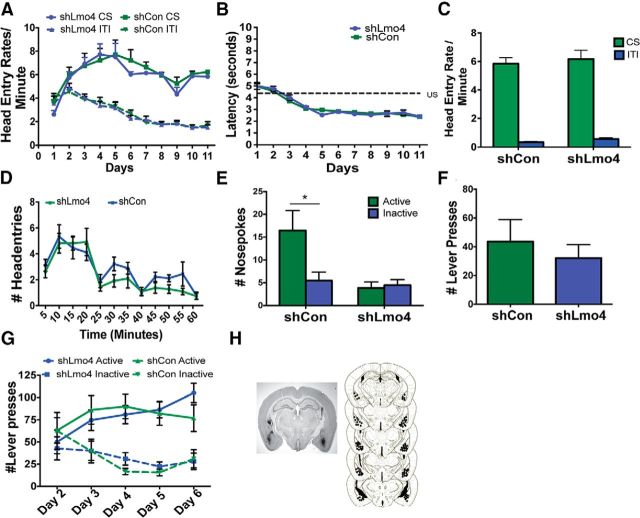Figure 3.
Knockdown of Lmo4 in the BLA does not affect cue–reward associations. A, During conditioning, mice injected with shCon (n = 13) or shLmo4 (n = 15) made more head entries during presentation of the cue than during the ITI. B, No differences were observed in latencies to enter the reward port after cue onset between shCon- and shLmo4-injected mice across training sessions. C, During goal tracking sessions, both groups made more head entries during the presentation of the cue than during the ITI. D, Differences were not observed between the groups in extinction of goal tracking. E, During the conditioned reinforcement session, shCon-injected mice made significantly more active than inactive nosepokes, whereas shLmo4-injected mice failed to discriminate between active and inactive nosepokes (*p = 0.002, Bonferroni test, n = 13). F, No significant difference was observed in the number of reinforcers obtained between the groups on day 1 of the instrumental conditioning session. G, Both shCr- and shLmo4-injected mice increased the number of active lever presses and decreased the number of inactive lever presses with training. H, Left, Coronal section showing GFP immunoreactivity indicating viral infection in the BLA. Right, Serial reconstruction of microinjection sites.

